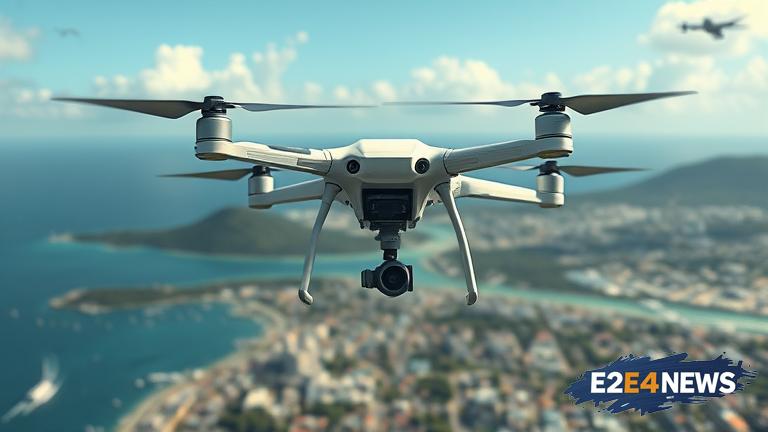The Caribbean region is facing a new and emerging threat to its security in the form of weaponized drones. These unmanned aerial vehicles (UAVs) have the potential to be used for malicious purposes, including terrorism, smuggling, and espionage. The use of drones in the Caribbean is not a new phenomenon, but the recent proliferation of weaponized drones has raised concerns among regional security experts. The threat posed by these drones is multifaceted, with the potential to disrupt critical infrastructure, compromise national security, and even target civilians. The Caribbean’s unique geography, with its numerous islands and extensive coastlines, makes it an attractive target for drone-based attacks. Furthermore, the region’s limited resources and infrastructure make it challenging to detect and respond to drone threats. The situation is further complicated by the fact that many Caribbean countries lack the necessary legislation and regulations to govern the use of drones. As a result, there is a pressing need for regional cooperation and early action to address the threat posed by weaponized drones. This includes the development of effective counter-drone measures, such as drone detection systems and interception technologies. Additionally, there is a need for increased awareness and education among the general public about the risks associated with drones. The Caribbean Community (CARICOM) has a critical role to play in addressing this threat, and regional leaders must work together to develop a comprehensive strategy to mitigate the risks posed by weaponized drones. This strategy should include the sharing of intelligence, the development of common standards and protocols, and the provision of training and capacity-building programs for regional security forces. The use of drones for malicious purposes is not limited to the Caribbean, and the region can learn from the experiences of other countries that have faced similar threats. For example, the United States has developed a range of counter-drone measures, including the use of drone detection systems and interception technologies. The Caribbean region can also benefit from international cooperation and assistance, including from organizations such as the International Civil Aviation Organization (ICAO) and the United Nations. Ultimately, the key to addressing the threat posed by weaponized drones in the Caribbean is early action and regional cooperation. By working together and taking proactive steps to mitigate the risks, the region can reduce the threat posed by these drones and ensure a safer and more secure future for its citizens. The situation is urgent, and regional leaders must take immediate action to address this emerging threat. The consequences of inaction could be severe, and the region must be prepared to face the challenges posed by weaponized drones. In conclusion, the threat posed by weaponized drones in the Caribbean is real and requires immediate attention. Regional cooperation, early action, and international assistance are essential to mitigating the risks and ensuring a secure future for the region.
